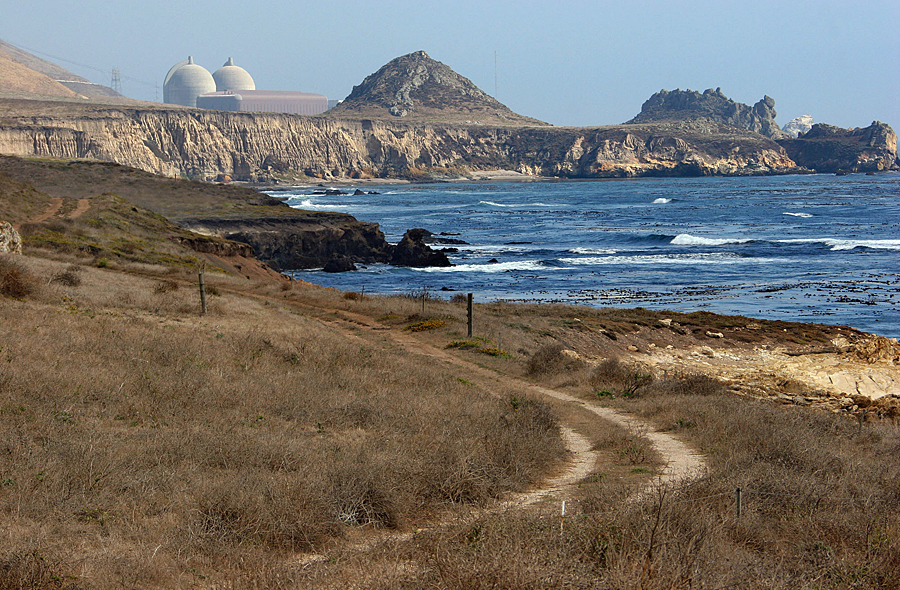Why California plans to shut down its only remaining nuclear power plant
Loading...
One of the first states to embrace nuclear power for electricity production in 1957 is considering closing its last nuclear facility in 2025.
In a proposal announced Tuesday, California’s Pacific Gas and Electric (PG&E) would close the Diablo Canyon Power Plant located between San Francisco and Los Angeles by 2025. The electricity the two nuclear reactors produces would be replaced by a "greenhouse-gas free portfolio of energy efficiency, renewables and energy storage," said the company in a statement.
"California's energy landscape is changing dramatically with energy efficiency, renewables and storage being central to the state's energy policy," said Tony Earley, PG&E's corporation chairman, chief executive, and president, in a statement. "This proposal recognizes the value of [greenhouse-gas free] nuclear power as an important bridge strategy to help ensure that power remains affordable and valuable, and that we do not increase the use of fossil fuels."
The proposed closure of the facility is seen by some as indicative of a continuing trend in the United States away from nuclear energy, as the the availability of renewable energies increases, and fears about nuclear meltdowns and nuclear waste have not dissipated. But opponents of Diablo's retirement, including an unlikely mix of environmentalists and climate scientists, worry lessening nuclear energy production could spell more carbon-dioxide (CO2) emissions.
The joint proposal to close the Diablo Canyon Power Plant, in San Luis Obispo, Calif., is an agreement among PG&E and environmental and labor groups. PG&E would not renew the two reactors' operating licenses from the Nuclear Regulatory Commission after they expire in November 2024 and August 2025.
The switch from nuclear to renewable and greenhouse-gas free energy is designed to conform with the state's aggressive energy plan. The legislation the governor signed in October requires that by 2030 half of the electricity generated in the state be from renewable energy sources. The legislation also requires energy efficiency in homes, offices, and factories be doubled, according to the Los Angeles Times.
Diablo's retirement isn't definitive; it is contingent on a number of regulatory actions, including approvals from the California Public Utilities Commission.
If it is closed, it will dramatically alter how the Golden State is powered. Diablo, which serves central and northern California, provides the state with one-tenth of its electricity.
But Diablo has been at the center of a nationwide controversy about nuclear power ever since construction started in the 1960s on the plant that overlooks the ocean. In 1981, about 2,000 protesters, including singer-songwriter Jackson Browne, were arrested at the construction site, according to Mother Jones. Ever since then, environmental groups such as the Sierra Club and Friends of the Earth have opposed the plant, especially since it relies on ocean water to cool its reactors.
Hostility to the Diablo plant intensified following the Japanese earthquake in 2011 that caused the meltdown at the Fukushima Daiichi nuclear power plant. The California plant is near several fault lines.
Yet, fears about a Fukushima-like accident weren't exclusive to Diablo. The nuclear meltdown fed into fears about past accidents such as those at Three Mile Island, Chernobyl, as well as fears about nuclear waste, and the potential for plants to be converted into weapons factories.
The proposed closing of Diablo then comes as the future of many of the country's 99 nuclear reactors is "looking grim," as The New York Times writes. "The flood of cheap natural gas and slowing demand for electricity have driven down power prices, making it difficult for the aging plants to compete in wholesale markets. In recent years, several plants have shut down before their licenses expired, and more early closings are planned or threatened around the country."
But these closings could come with an unforeseen consequence: a rise in CO2. After the Vermont Yankee power plant closed, for instance, New England saw a rise in CO2, as the region compensated for the loss with more electricity production from natural gas that releases CO2.
Nuclear power accounts for about 60 percent of the country's carbon-free power. Critics have warned of a scenario like Vermont Yankee, where the closure led to more greenhouse gas production. In fact, when talks about the Diablo facility surfaced, an unlikely coalition of environmental scientists wrote a letter to stakeholders.
The letter warned that "closing Diablo Canyon would make it far harder to meet the state's climate goals."
If the retirement of Diablo is approved, PG&E has eight years to ensure the transition is green.





